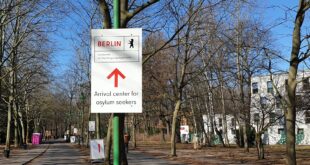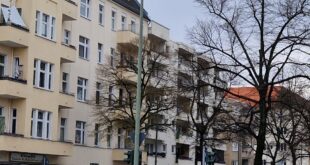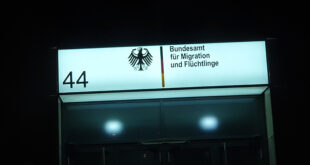Chances of being granted asylum may depend on the state in which the application is filed. Figures provided by the German Office for Migration and Refugees reveal significant differences in protection rates in individual states, reports Charlotte Hauswedell.
The Federal Office for Migration and Refugees (BAMF) is responsible for the processing of asylum requests in all sixteen German states. In theory, protection rates should therefore be similar.
However, based on figures now provided by the federal agency, the rates were different from state to state in 2017. As the newspaper Rheinische Post reports, the state of Saarland had the highest protection rate of 72.8 percent whereas Brandenburg had the lowest rate of 24.5 percent. North-Rhine Westphalia ranked in the middle with 45.3 percent.
The BAMF figures contained no information about whether the country of origin of asylum seekers played a role in the difference of protection rates, as AFP reports.
Some destinations more popular than others
The BAMF has however already stated that some regions in Germany were more popular for nationals of a certain origin than others. For example, in some regions of Germany, more people from Syria were seeking asylum, and they have higher chances of being granted asylum than Afghan nationals. This would account for regional differences in the decisions made by BAMF.
Yet when considering protection rates by nationality only, differences still remain between states. Figures show that the protection rate for Iraqis, Iranians and Afghans in the states of Brandenburg, Bavaria and Saxony were lower than the national average. This is according to an inquiry by the Left party. Members of the Left party have voiced concern over a possible regional bias among BAMF employees responsible for making decisions.
Political scientist Gerald Schneider has also stated that deciders seemed to be influenced by “perceived sensitivities” in their surroundings. For example, there was a correlation between a high unemployment rate and a low protection rate, he mentioned. Similarly, protection rates were low in regions with a high number of xenophobic attacks.
Lower protection rates in general
Fewer asylum seekers are granted protection status in Germany. All federal states show an overall decrease in protection rates over the last two years. In Bavaria, for example, the rate dropped from 64.7 percent in 2016 to just 31.8 percent in 2017. For Brandenburg, the rate decreased from 59.4 to 24.5 percent over the same time period, according to the news agency EPD.
© InfoMigrants
 THE AFRICAN COURIER. Reporting Africa and its Diaspora! The African Courier is an international magazine published in Germany to report on Africa and the Diaspora African experience. The first issue of the bimonthly magazine appeared on the newsstands on 15 February 1998. The African Courier is a communication forum for European-African political, economic and cultural exchanges, and a voice for Africa in Europe.
THE AFRICAN COURIER. Reporting Africa and its Diaspora! The African Courier is an international magazine published in Germany to report on Africa and the Diaspora African experience. The first issue of the bimonthly magazine appeared on the newsstands on 15 February 1998. The African Courier is a communication forum for European-African political, economic and cultural exchanges, and a voice for Africa in Europe.



























